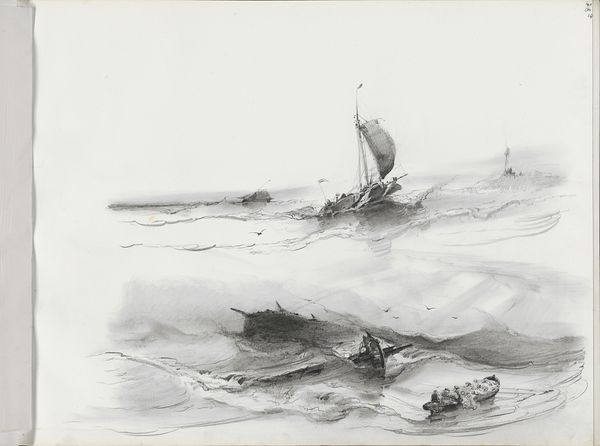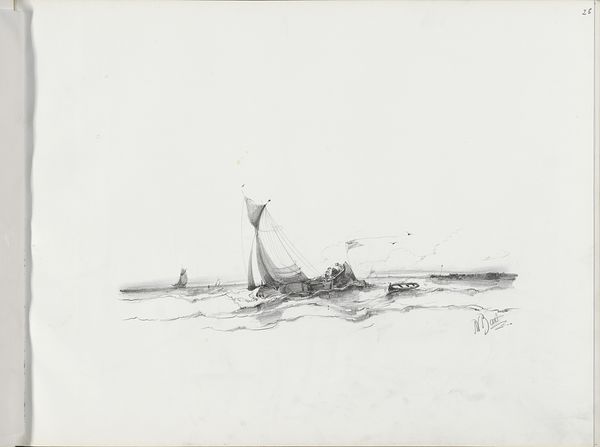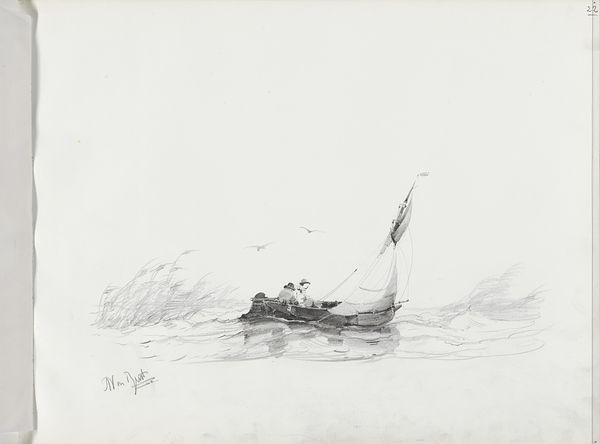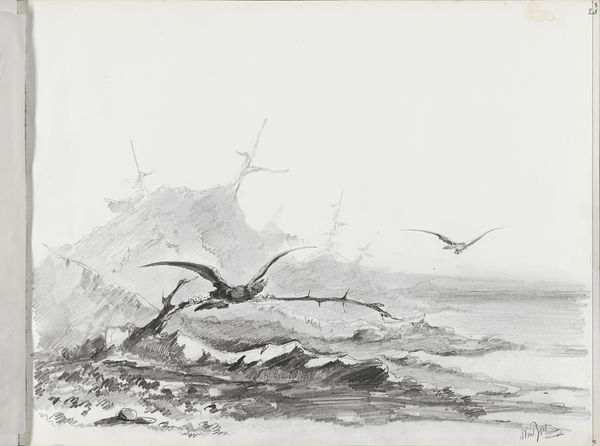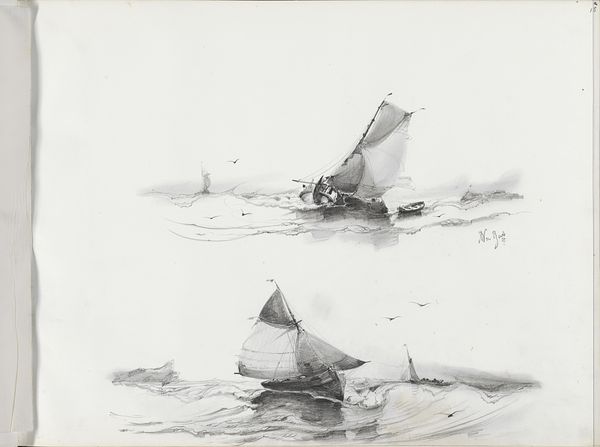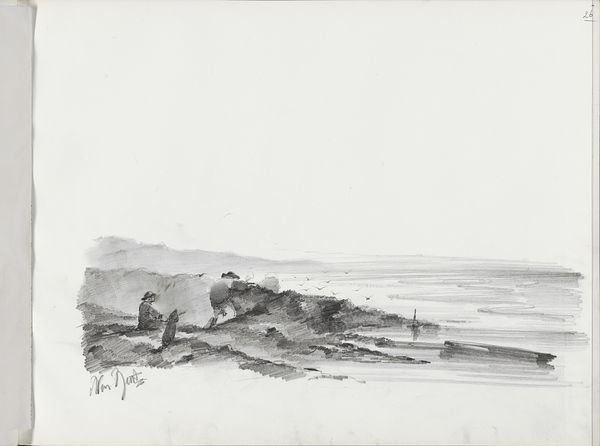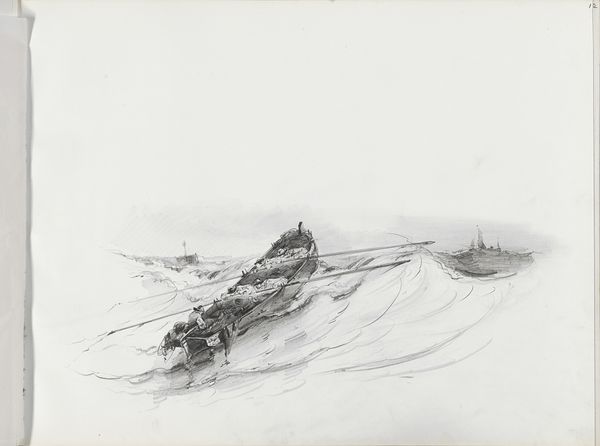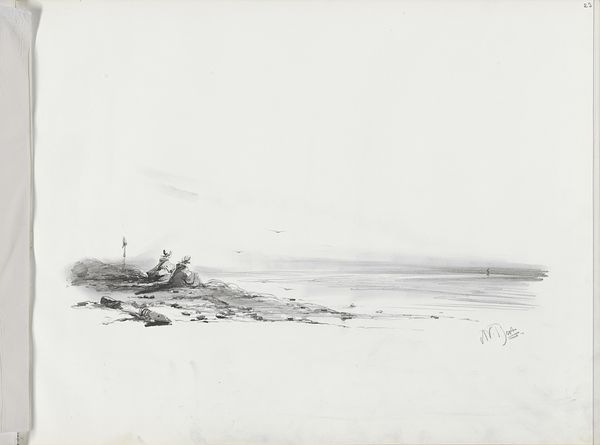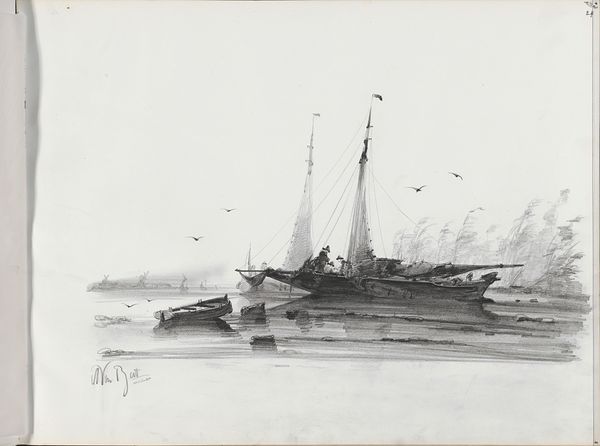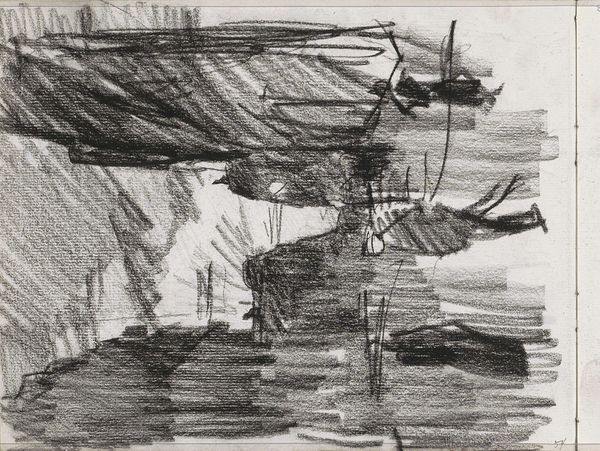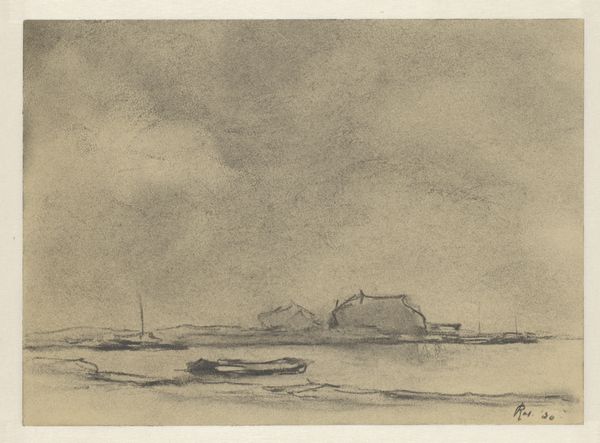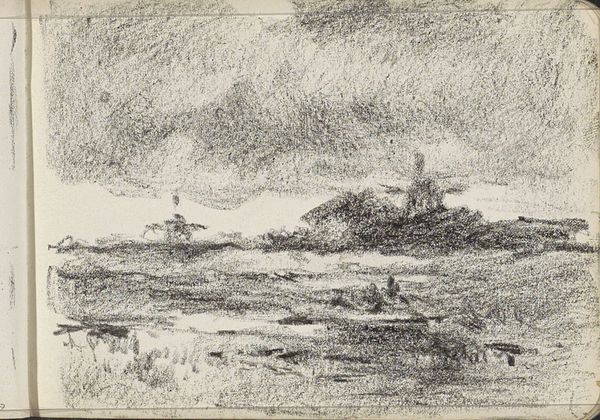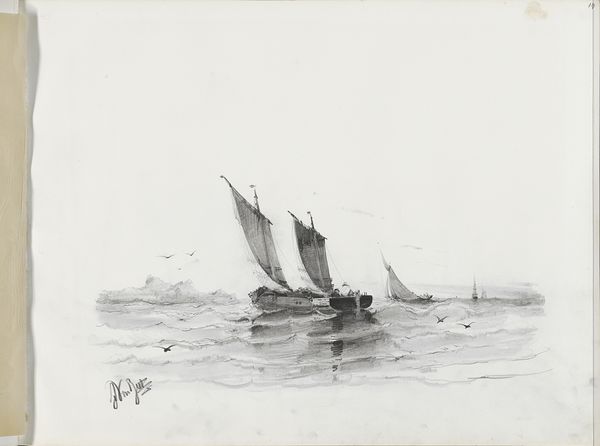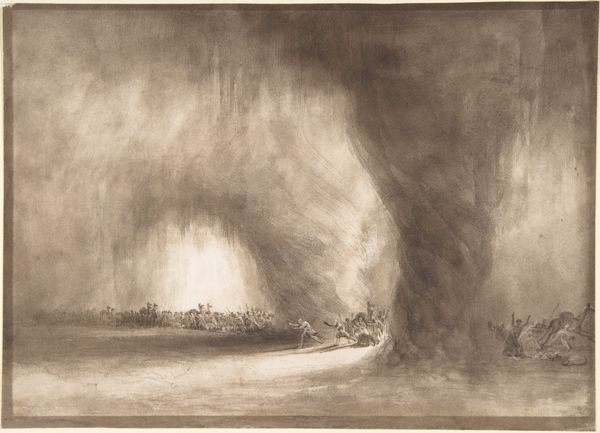
drawing, pencil, architecture
#
drawing
#
pencil sketch
#
landscape
#
romanticism
#
pen-ink sketch
#
pencil
#
architecture
#
realism
Copyright: Rijks Museum: Open Domain
Editor: Here we have "Aangemeerd zeilschip bij een riethaag" – or "Moored sailing ship by a reed fence"– by Albertus van Beest, dating from 1830 to 1860. It's a pencil drawing, quite delicate, really. I’m immediately struck by the stillness in the water, which feels so different from the restless reeds. What do you see in it? Curator: Ah, yes! The water…it is like a mirror reflecting the weight of history, wouldn't you say? Van Beest captures a certain placidity amidst potential turmoil. Imagine standing there, hearing the rustle of those reeds – whispering secrets, maybe, while the boat rests, burdened with stories of its own journeys. Doesn't it feel almost…meditative? Like a pause in a sailor's song? Editor: I get that sense, definitely. But what strikes me is how he uses the pencil, almost sketch-like. Was this typical of his style, or of the period? Curator: Well, consider the Dutch tradition, always flirting with realism. The pencil allows him to grasp a fleeting moment, right? That play of light and shadow. It whispers “truth,” even while it hints at romantic longing for simpler days, a whisper to an audience maybe already sensing the industrial revolution on the horizon, yes? So is it realist? Is it Romantic? I see both intertwined in the very stroke. Editor: That's a fascinating thought – the anxieties of industrial change creeping into what looks like a simple landscape. It makes the piece feel much more complex. Curator: Art always does, my dear! What did you think of those birds flying over the sea. Symbolism of freedom, perhaps, in a world on the precipice of change, I believe? Editor: Now I see it! This was incredibly helpful to open up a broader, richer understanding of this pencil drawing by Van Beest. Thanks. Curator: My absolute pleasure, as always! Art offers new revelations for us to interpret, now and for years to come.
Comments
No comments
Be the first to comment and join the conversation on the ultimate creative platform.
